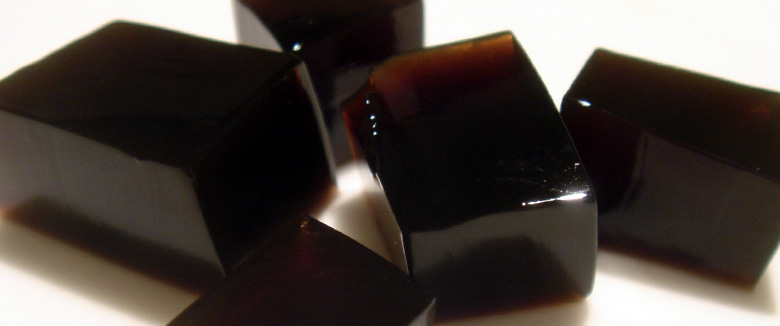What is Coffee Jelly?

Whilst looking around for some coffee inspiration online, I discovered some of the history of Coffee Jelly. And I discovered that it appears to be an English invention; first appearing in the recipe book “The New Family Receipt-book” in 1817.
It describes combining a very strong brewed coffee to be mixed with gelatin, cream and Lisbon sugar. Once at the right level of stiffness, it can then be cut into cubes.
In the 19th century Coffee Jelly was attempted to be sold commercially, with desserts manufacturer Jell-O attempting to launch their version of a coffee jelly in 1918, however this never gained widespread popularity.
Today, it’s hard to find Coffee Jelly in the UK and it’s only sold in certain niche coffee shops in the USA, however there is one place that’s taken the idea of coffee jelly and ran with it.
Japan has developed the creation, substituting the gelatin for Agar, which is a common ingredient in desserts throughout Asia. It’s made from certain species of Algae, and offers a natural, vegetable alternative to using Gelatin.
Commonly served on its own, or in a bowl or cup with sweetened cream, this dessert takes some experimentation to get right, ensuring the right balance of coffee bitterness and sugary sweetness.
They’re also served with ice cream, in milkshakes, iced coffee and with whipped cream and chocolate sauce. It is even so popular that Starbucks released a Coffee Jelly iced coffee drink in japan in 2016.
It’s been taken to an even higher level with coffee jelly being made in unique shapes and designs, rather than simple cubes. Stars, hearts, shells and fruit shapes have been created with moulds.
This writer imagines the coffee jelly experience is likely to be a bit of a “marmite” experience, in that some people will love it, others may hate it – jelly definitely has an interesting texture!
